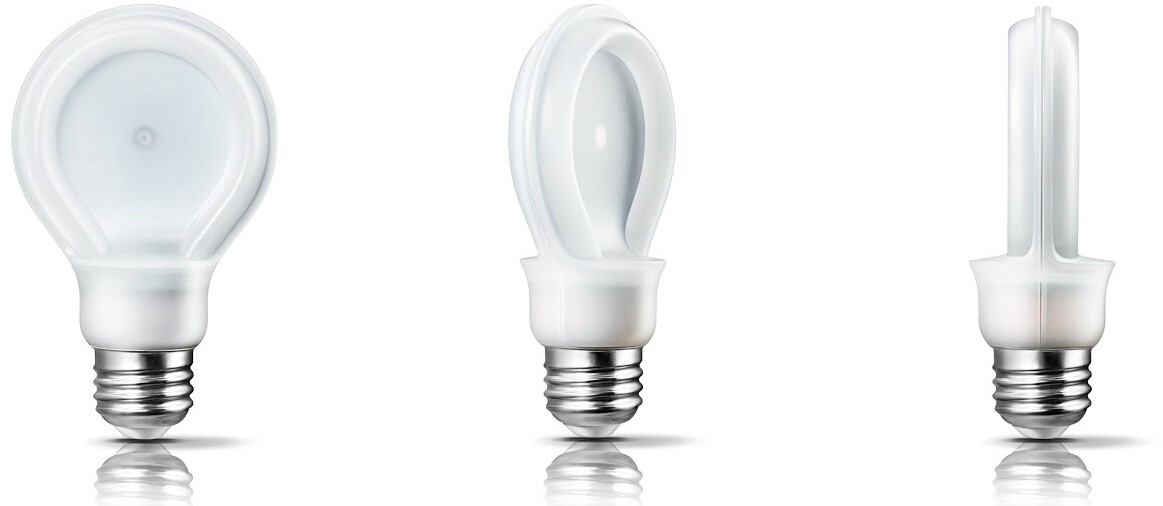The marketplace for more-or-less normal-looking LED light bulbs became just a little more crowded yesterday, when Philips announced the dimmable 75-watt equivalent version of its SlimStyle bulb. With an output of 1,100 lumens, it's a significant step up from the 60-watt equivalent 800-lumen model that previously sat at the top of the SlimStyle line.
There's a reason that we say "more-or-less normal-looking" ... while the SlimStyle looks like a regular light bulb when viewed face-on, it's flat when seen in profile. This design reportedly draws heat away from Luxeon LEDs inside, so no aluminum heat sink is required. That lack of a heat sink means that less work and material are required to build the bulb, plus it has a lower shipping weight – all of which are reflected in its relatively low price.

According to Philips, the new bulb consumes 13 watts of power, and should last for approximately 25,000 hours. Also, despite its asymmetrical design, it is claimed to produce even, omni-directional light.
It's available now for US$12.97, although instant in-store rebates in some markets will drive that price down to $7.97. The latter is the same price as Cree's new LED light bulb which also does away with the heat sink and looks more like a regular light bulb, although it tops out at a 60-watt equivalent 815-lumen model.
Source: Philips





